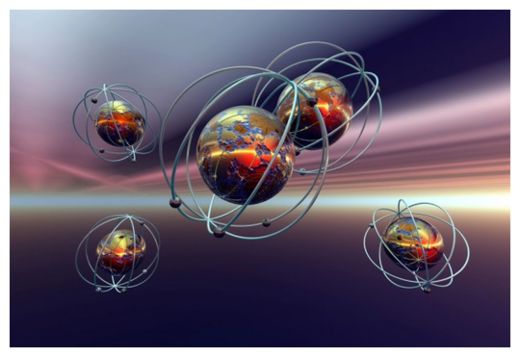
© sam100 / Shutterstock
Since 1927, when Werner Heisenberg formulated the
uncertainty principle, it has stood as one of the cornerstones of quantum mechanics. In a simplified form, the uncertainty principle states that it is impossible to measure anything without disturbing it. For example, any attempt to measure a particle's position must randomly change its speed.
For clarity's sake, one should be aware that the uncertainty principle is not the same as the
observer effect, which states that the act of observing a phenomenon will change the phenomenon itself. The uncertainty principle is more about how precisely something can be measured in two dimensions such as position and momentum, simultaneously. In common parlance, the two theories are often conflated.
This principle has driven quantum physicists crazy for nearly a century. That is, it drove them crazy until recently, when researchers at the
University of Toronto demonstrated the ability to directly measure the disturbance and confirm that Heisenberg was too pessimistic.
"We designed an apparatus to measure a property - the polarization - of a single photon. We then needed to measure how much that apparatus disturbed that photon," says Lee Rozema, a PhD. candidate in Professor Aephraim Steinberg's quantum optics research group at U of T.
"To do this, we would need to measure the photon before the apparatus but that measurement would also disturb the photon," Rozema says.
To overcome this challenge, the team employed a technique known as weak measurement wherein the action of a measuring device is weak enough to have an imperceptible impact on what is being measured. Prior to sending each photon to the measurement apparatus, the physicists measured it weakly and then measured it again afterwards. They then compared the results and found that the disturbance induced by the measurement is less than Heisenberg's precision-disturbance relation would require.
"Each shot only gave us a tiny bit of information about the disturbance, but by repeating the experiment many times we were able to get a very good idea about how much the photon was disturbed," says Rozema.
The
team's findings, published this week in
Physical Review of Letters, build on other recent challenges to Heisenberg's principle by scientists worldwide. For example,
Nagoya University physicist Masanao Ozawa suggested in 2003 that Heisenberg's uncertainty principle does not apply to measurement, but could only suggest an indirect way to confirm his predictions. Yuji Hasegawa's group at the
Vienna University of Technology carried out a validation of the sort Ozawa proposed in 2011. In 2010,
Griffith University scientists Austin Lund and Howard Wiseman showed that weak measurements could be used to characterize the process of measuring a quantum system. However, there were still hurdles to clear, as their idea required a small quantum computer, which is still difficult to build.
"In the past, we have worked experimentally both on implementing weak measurements, and using a technique called 'cluster state quantum computing' to simplify building quantum computers. The combination of these two ideas led to the realization that there was a way to implement Lund and Wiseman's ideas in the lab," says Rozema.
Scientists often assume that Heisenberg's uncertainty principle applies to both the intrinsic uncertainty that a quantum system must possess, as well as to measurements. The results from the University of Toronto show that this is not the case. Instead, they demonstrate the degree of precision that can be achieved with weak-measurement techniques.
"The results force us to adjust our view of exactly what limits quantum mechanics places on measurement," says Rozema. "These limits are important to fundamental quantum mechanics and also central in developing '
quantum cryptography' technology, which relies on the uncertainty principle to guarantee that any eavesdropper would be detected due to the disturbance caused by her measurements."
"The quantum world is still full of uncertainty, but at least our attempts to look at it don't have to add as much uncertainty as we used to think!"
Reader Comments
to our Newsletter